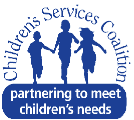By Jane E. Brody, December 2, 2019
New York Times

Too often, suicide attempts and deaths by suicide, especially among the young, become family secrets that are not investigated and dealt with in ways that might protect others from a similar fate.
The death of a child is most parents’ worst nightmare, one made even worse when it is self-inflicted. This very tragedy has become increasingly common among young people in recent years. And adults — parents, teachers, clinicians and politicians — should be asking why and what they can do to prevent it.
In October, the Centers for Disease Control and Prevention reported that after a stable period from 2000 to 2007, the rate of suicide among those aged 10 to 24 increased dramatically — by 56 percent — between 2007 and 2017, making suicide the second leading cause of death in this age group, following accidents like car crashes.
“We’re in the middle of a full-blown mental health crisis for adolescents and young adults,” said Jean M. Twenge, research psychologist at San Diego State University and author of the book “iGen,” about mental health trends among those born since 1995. “The evidence is strong and consistent both for symptoms and behavior.”
Along with suicides, since 2011, there’s been nearly a 400 percent increase nationally in suicide attempts by self-poisoning among young people. “Suicide attempts by the young have quadrupled over six years, and that is likely an undercount,” said Henry A. Spiller, director of the Central Ohio Poison Center, who called the trend “devastating.” “These are just the ones that show up in the E.R.”
Had any other fatal or potentially fatal condition leapfrogged like this, the resulting alarm would surely have initiated a frantic search for its cause and cure. But too often suicide attempts and deaths by suicide, especially among the young, become family secrets that are not investigated and dealt with in ways that might protect others from a similar fate.
“We’re at a point now where this issue really can’t be ignored,” said John P. Ackerman, clinical psychologist and coordinator of suicide prevention at Nationwide Children’s Hospital in Columbus, Ohio. “We invest heavily in crisis care, which is the most expensive and least effective means of preventing suicide.”
He proposed instead that more time and money be spent “on identifying kids who are most vulnerable, helping them respond effectively to stress, and teaching them what they can do in a crisis. And we need to start early, in the elementary grades. We haven’t even begun to use the resources that we know work. We have to be proactive.”
In Ohio, he said, “about 40,000 students have been screened for depression and suicide risk, and hundreds of kids have been linked to services. It’s not putting ideas in their heads to ask directly whether they’ve had thoughts of suicide or dying. That doesn’t increase their risk. Rather, it’s relieving. You actually reduce the risk if you help kids talk through these difficult feelings.”
Although no one can say with certainty why suicide has become such a crisis among the young, experts cite several factors that parents, schools and others might be able to modify or control. Dr. Spiller, for example, attributes the rise in suicide attempts largely to the effects of social media and how teens and young adults communicate with their peers.
“Kids now never disconnect,” he said. “They’re connected 24/7. They go to bed with their smartphones. It may be cyberbullying. It may be envy. Maybe many things are going on here.”
One thing the research didn’t find was a link of teen suicides to the opioid crisis. Instead, in school-age adolescents, it found a rise in suicide attempts during school months — September until December, then again January through May — that doesn’t happen in adults.
The rise in attempted and completed suicides by young people correlates directly with their access to smartphones, Dr. Twenge said. “Developmentally, these ages have always been difficult, but that’s been taken to the next level by smartphones, social media and the constant pressure to be online.”
“Eighty-five percent of teens are looking at social media,” she said. “There’s less face-to-face time spent with friends. It’s now the norm to sit home Saturday night on Instagram. Who’s popular and who’s not is now quantifiable by how many people are following you. Kids are spending as much as eight hours a day on social media, where there’s a lot of negativity, competition and jockeying for status and unfiltered access to sites that tell them how to harm themselves.”
Dr. Ackerman, who noted that “young brains are less adept at dealing with complex situations,” likewise believes social media plays an important role in the suicide crisis among the young. But he sees the problem more broadly and said there is a need for schools to help counter it. Staff can be trained and screening done within schools, he said.
“Ultimately it’s a combination of economic, social and technological factors that come together along with family and school issues, and kids are less equipped to tackle these problems,” he said.
Sleep, or rather, not enough of it, is another issue undermining the resilience of today’s teens.
Several studies have found a link between “problematic internet and social media use and sleep disturbance among youth,” and that “these associations contribute to depressive symptoms in this group,” Dr. Twenge and co-authors reported in the Journal of Abnormal Psychology.
“Two surveys have shown that teens are not sleeping enough, and having a smartphone in the bedroom results in less sleep and poorer quality sleep,” she said. “It’s too tempting to stay up late looking at the phone, and the blue light it emits keeps the brain thinking it’s daytime. Almost everything done on devices is psychologically stimulating. The brain can’t slow down and relax.”
Her advice: “Avoid looking at devices within an hour of bedtime, and buy an alarm clock. It’s not the technology itself that’s the problem — it’s how we use it. We have to use it more mindfully.”
She urges parents to set reasonable limits about kids’ use of technology. Setting such limits is “not only good for kids, but they appreciate it in the long run,” she said. She noted that modern smartphones have parental control systems built in and parents can set kids’ phones to shut down at 9 p.m.
Experts also urge parents to check in with their teenage children regularly, asking how they’re feeling and whether they ever think about dying. “As early as elementary school, children can have responsible conversations about suicide,” Dr. Ackerman said. “We need to prepare young people to talk about their emotions early in life.”
He and others also emphasized the importance of controlling access to possible means of suicide, which they note is most often an impulsive act. Youngsters should never have uncontrolled access to guns, drugs or other substances that can result in a fatal overdose.
If you are having thoughts of suicide, call the National Suicide Prevention Lifeline at 1-800-273-8255 (TALK). You can find a list of additional resources at SpeakingOfSuicide.com/resources.
The KUTO Crisis Helpline – (314/888)644.5886 – is youth friendly and available 24/7.
Download a St. Louis Resource Roster by clicking on the link. Follow this link for Self-help Ideas.
 If you or someone you know is in crisis or needs help, call the KUTO Crisis Helpline:
If you or someone you know is in crisis or needs help, call the KUTO Crisis Helpline:









